Iran Sanctions 32 European Individuals, Institutions
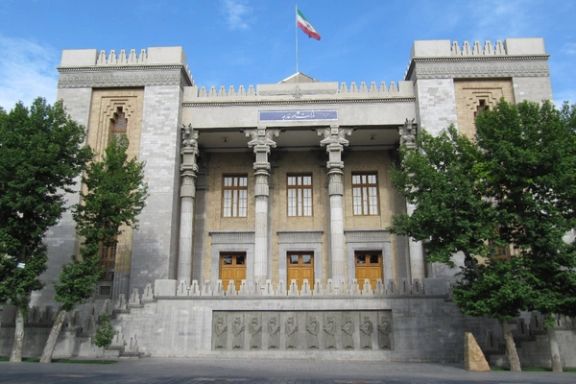
Iran's has sanctioned European Union officials and entities over their alleged “support for terrorism and violation of human rights against the people of Iran.”

Iran's has sanctioned European Union officials and entities over their alleged “support for terrorism and violation of human rights against the people of Iran.”
In a statement published Monday, the foreign ministry listed four institutions and 13 individuals in the United Kingdom for their “deliberate actions in supporting terrorism..., hatred that causes riots, violence, terrorist acts, and human rights violations against the Iranian people.”
Some of the sanctioned individuals include Ken McCallum, Director General of the UK’s domestic spy agency MI5, as well as Chief of the Defense Staff Tony Radakin.
In a separate statement, the Iranian foreign ministry also announced sanctions on several EU officials and entities including Radio Farda, the Persian Service of Radio Free Europe in Prague, Netherlands-based Persian Radio Zamaneh, and Charlie Hebdo magazine.
Some current and former EU politicians including Hannah Neumann and Claudia Roth are also included in the list.
The sanctions include ban on issuing visas and entering Iran and confiscation of their property and assets in Iran, which would affect Iranian expats working for the two broadcasters.
The UK and European countries have been vocal critics of Iran’s crackdown on protestors, issuing multiple rounds of sanctions against the Islamic republic.
The sanctions coincide with Iran carrying out its second execution over the protests. Majidreza Rahnavard, 23, was publicly hanged Monday for allegedly stabbing two members of Basij militia in the city of Mashhad.
European Union foreign ministers on Monday condemned Iran for its crackdown on anti-government protests, moving ahead with a new package of sanctions meant to raise pressure on Tehran.
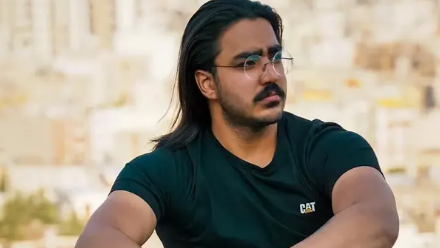
The Islamic Republic has hanged a second protester in less than a week in public on Monday after charging him with killing two members of security forces.
"Majid Reza Rahnavard was hanged in public in (the religious Shi'ite city of) Mashahd this morning ... he was sentenced to death for 'waging war against God' after stabbing to death two members of security forces," Mizan news website run by the country’s hardliner Judiciary said.
The hanging took place despite domestic and international outcry over the execution of the first protester, Mohsen Shekari, on December 8 who was charged with injuring a government security agent and blocking a street.
Both executions are seen as acts of intimidation against protesters, especially Rahnavard’s hanging in public.
Nationwide protests, in their third month, erupted after the killing of 22-year-old Kurdish Iranian woman Mahsa Amini on September 16 in the custody of morality police enforcing strict mandatory dress code laws.
The demonstrations have turned into a popular revolt by furious Iranians from all layers of society, posing one of the worst legitimacy challenges to the clerical leadership since the 1979 revolution.
The government has used thousands of well-armed regular and irregular forces to repress the protests, using severe beating, firing shotguns that have killed and blinded hundreds of people and even military weapons.
Activists on social media criticized the execution of the 23-year-old Rahnavard as "a criminal act" by the clerical establishment to deter dissent.
The United States and a host of European countries and institutions had strongly condemned the first execution. Many Iranians living in Europe demanded that the European Union and its members take tougher measures against the Islamic Republic, including severing diplomatic ties and closing embassies.
Rights groups have said Shekari was tortured and forced to confess. All tirals of detained protesters take place behind closed doors without due process, including the right of the accused to have their own defense lawyers.
Amnesty International has said Iranian authorities are seeking the death penalty for at least 21 people in what it called "sham trials designed to intimidate those participating in the popular uprising that has rocked Iran".
Iran's state media aired footage of a man, which they identified as Rahnavard, stabbing another man who fell against a parked motorcycle and then stabbing another person immediately after.
Mizan said Rahnavard was arrested when trying to flee the country 23 days ago. It added that his sentence was upheld by a higher court.
Rights group HRANA said that as of Sunday 488 protesters had been killed, including 68 minors. It said 62 members of the security forces had also been killed. As many as 18,259 protesters are believed to have been arrested, it said.
While the United Nations says the protests have cost more than 300 lives, a top Iranian state security body has said that 200 people, including members of the security forces, had died in the unrest.
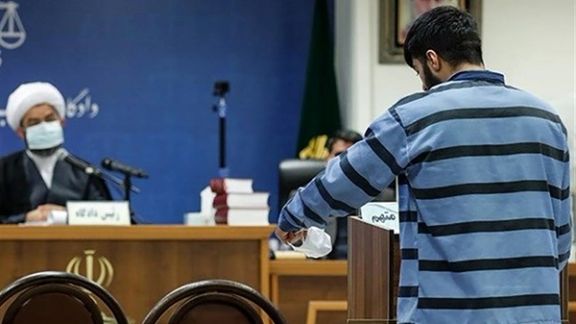
As the Islamic Republic is adamant to execute more protesters, some Islamic law experts are voicing opposition to the Judiciary’s interpretation of Sharia.
Iranian Shia theologian Morteza Moghtadaei -- the deputy chairman of Society of Seminary Teachers of Qom told Iran’s Labour News Agency Sunday that the judicial system does not adhere to Islamic law, or sharia, regarding limitation to issuing death sentence.
Himself a former Revolution Court judge and head of Supreme Court of Iran, Moghtadaei said "In cases where a person does not fight with a group and only fights with one person, that person is not called a mohareb," referring to the charge of "moharebeh" that the Islamic Republic’s judiciary has issued for many protesters.
“Moharebeh” is an Islamic-Arabic term that in the lexicon of the Iranian regime means “fighting God” and its punishment is death.
The judiciary announced on Thursday the execution of Mohsen Shekari, a twenty-three-year-old protester convicted of injuring a security guard with a knife and closing off a street in the capital Tehran. He was charged with Moharebeh that along with another Islamic concept translated as “corruption on earth” are used as broad concepts by the regime to issue maximum sentences against opponents.
Clerical judges who take orders from the hardliner Judiciary convict people to death without a real trial, often with no defense lawyers and behind closed doors. The defendants have no way of challenging state evidence or introducing witnesses.
Moghtadaei elaborated that "If a mohareb kills someone, he should get the death sentence, but if he only threatens and intimidates, even if he is convicted, he should not get a death sentence; which means although he is a mohareb but should not be executed.”
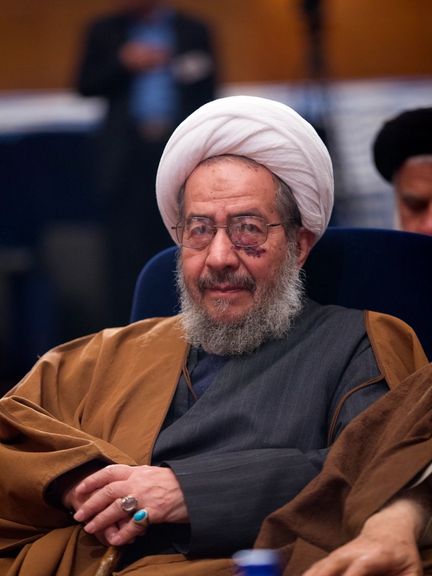
Mohammad-Ali Ayazi, another Shia scholar and a seminary teacher, also said that everyone has the right to protest and can defend himself against government agents who want to prevent him. That is not committing ‘moharebeh’, he underlined.
He added that "In an important issue such as execution, it is important that an independent lawyer defends the accused and that a public hearing is held in the presence of a jury." If these principles are not respected, the cycle of violence will continue, Ayazi noted.
Prominent Iranian lawyer Nemat Ahmadi also criticized the judiciary for the prompt decision to issue death sentences for some of the detained protesters, saying that death sentences cannot be issued so haphazardly. He said that according to Article 279 of the Islamic Penal Code, a person is called a mohareb when he takes up a weapon against the people to cause insecurity by threatening others’ lives, property and honor. “Those who oppose the government are not recognized as mohareb,” he explained.
He added that many Islamic scholars believe the term should be used to describe bandits who endanger the security of the society, considering the historic context in which the term came into existence in the first place. It is very important to determine the use of the term with a lot of caution.
Mohammad-Hossein Saket, another lawyer and law researcher, said that “in general, it is not good to mix legal issues with political issues and make hasty decisions.”
In a speech after the execution of the first protester, President Ebrahim Raisi announced that "the trial and punishment of the protesters" will continue. Also, Ahmad Khatami, a hardliner cleric and Friday prayer Imam expressed his gratitude “for the decisiveness of the Judiciary, which sent the first rioter to the gallows.” Judiciary spokesman Masoud Setayeshi had announced Tuesday that five more people indicted in the killing of a Basij militia member, Rouhollah Ajamian, were sentenced to death.
Shekari’s hanging after a hasty and unfair trial has sparked deep anger among Iranians, who believe his killing was meant to instill fear among the people, and world leaders who describe the act as the acme of atrocity and a nadir of humanity.
Iran’s top Sunni religious leader has also slammed the executions of protesters as violations of Sharia law and warned the authorities that this will not stop the antigovernment movement.
Nationwide protests that erupted after the death of 22-year-old Kurdish Iranian woman Mahsa Amini on September 16 represent one of the biggest challenges to the Islamic Republic since its establishment in 1979. So far, around 500 civilians have been killed by security forces and at least 18,000 arrested. While many have been released, around 1,500 face criminal charges, and at least 80 detainees face the death sentence.
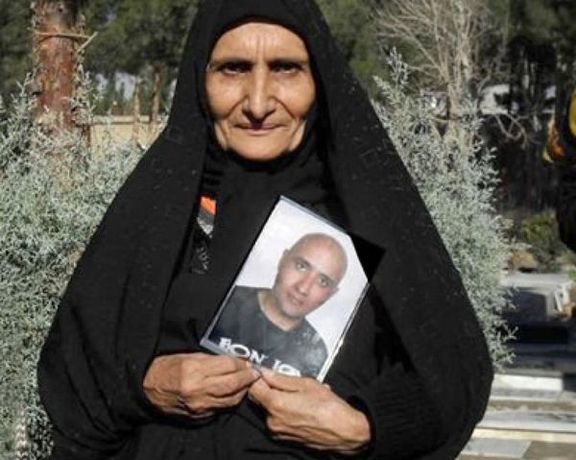
An elderly woman, whose son was killed in prison eleven years ago, says the Iranian regime has increased pressure and threats against her and her family members.
Gohar Eshghi, the mother of the 35-year-old blogger Sattar Beheshti, who was killed under torture in prison, announced in a video message Sunday that she and her family have been threatened by government agents.
Sattar Beheshti's mother emphasized that “If something happens to us, the [supreme] Leader [Ali Khamenei] is responsible.”
She added that the security forces have been threatening her for eleven years, but she and the people of Iran are ready to expel them and their master (Khamenei) from the country.
Gohar Eshghi had previously reported threats against her by the clerical regime in early December saying, “No one is afraid of death! Don't threaten!”
Last year, she was assaulted by unknown individuals when she was on her way to visit her son’s grave. Two people approached on a motorcycle and one of them attacked the elderly woman knocking her to the ground. People who saw the incident took her to a hospital, with injuries.
She has been demanding justice for her son who was arrested by security forces for his blogging activity and died a few days later, in what was believed to be a case of torture in detention.
Beheshti was an ordinary laborer who was active on Facebook and maintained a blog, often criticizing Islamic Republic officials.

The former chief of Iran’s state Radio and TV says the current way of governance is “unsustainable” and the regime faces such “misery it cannot meet the smallest demands of the people.”
Mohammad Sarafraz said in a video message that “beating and killing [protesters] will not work and sooner or later it will reach a dead end, so this method must end.”
The comments by Sarafaraz, which can be interpreted as an unprecedented warning by an official appointed by Supreme Leader Ali Khamenei, were made in a conversation with Shahrazad Mirqolikhan.
Mirqolikhan was arrested and imprisoned for five years in the US for trying to send military equipment to Iran.
After her release, she went to Oman and later became the public relations manager of Press TV, the English-language Iranian state TV channel, which was headed by Mohammad Sarfraz at the time.
In his unprecedented speech, Sarafraz warned Supreme Leader’s son, Mojtaba Khamenei saying “the method of putting pressure on people and not paying attention to their political and economic demands and their legitimate freedoms will not work.”
“I am in a situation that I know by making these remarks, anything may happen to me, so I have written my will,” added Sarafraz.

An alliance of 30 youth groups organizing protests and strikes in various Iranian cities since mid- October through social media, has published its manifesto.
The so-called neighborhood youth groups have assumed a leading role in organizing protests when first they separately announced their existence on social media. These underground groups, whose members remain anonymous, use Twitter and Telegram as their main platforms. Several of the groups recently announced they had formed an alliance calling it United Youth of Iran (UYI).
The group said its manifesto circulated on social media on Sunday is meant to “pave the grounds for dialogue and cooperation” among various trade organizations, unions, political groups and activists inside Iran and abroad.
Iranian protesters have made it clear in the past three months that they are not seeking reforms within the system of the Islamic Republic. Their slogans against Supreme Leader Ali Khamenei show, they are seeking a revolution - a complete regime change. “This is not protest anymore, this is a revolution,” demonstrators often chant.
The youth groups alliance says getting rid of the Islamic Republic, separation of religion and state, and the “formation of an inclusive, democratic government” form the cornerstone of the 43-article manifesto, The document highlights the strictly secular nature of any future government.

The first article of the manifesto is inspired by a famous Persian poem from the 13th century poet Saadi, which is also inscribed on a large hand-made carpet at the United Nations headquarters in New York, that says:
"Human Beings are members of a whole
In creation of one essence and soul
If one member is inflicted with pain
Other members uneasy will remain
If you have no sympathy for human pain
The name of human you cannot pertain"
The articles of the manifesto emphasize the right of the Iranian people to self-determination, citizens' equality before the law, full equality of men and women, freedom of belief and religion, freedom of speech, freedom of forming trade and other unions, as well as personal freedoms.
“Political parties must have freedom of action within the framework of law, respect for the country’s territorial integrity, fundamental human rights, transparency, and they must abide by democracy,” article 22 of the manifesto says.
The country’s foreign policy should be based on securing national interests and maintaining global peace, and non-interference, the manifesto says, and underlines that the future government of Iran should be committed to international charters and conventions, including the Universal Declaration of Human Rights, International Covenant on Civil and Political Rights, International Covenant on Economic, Social and Cultural Rights, Convention on the Elimination of all Forms of Discrimination Against Women, and Convention on the Rights of the Child.
Several of the articles of the manifesto outline the future government’s duties to work for the welfare of its citizens, especially those not capable of providing for themselves without state assistance, provide free education and healthcare to all, protect the environment, and ensure that the rich pay their taxes in proportion to their income.
The manifesto can become an outline or a guide for a new, post-Islamic Republic constitution, reflecting the aspirations of a majority of young and older Iranians.